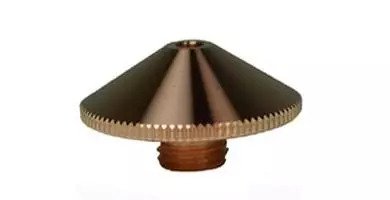Laser marking, engraving, and cutting are present in almost all industries. They are widely known for the advanced features, advantages, and ease it brings to fabricators. There is not a single industry that is untouched by laser machines.
As you know, it is useful in various industries, but it has become an integral part of the medical, aviation, and military industries. These are the places in which safety and security are some of the major factors.
More manufacturers put permanent identification labels on their components, so it is easier to identify and trace them.
Almost every industry is using laser technology to add barcode and unique identification numbers to various parts. One of the major factors they are useful is because laser marking provides non-contact, abrasion resistance, and permanent marks to any type of material.
But you need to understand the fact that not all types of laser marking technology are good for your business. If you are looking for an efficient laser technology that can create permanent, fast, and high contrast marks for identification and traceability then fiber laser machines are your go-to solution.
The versatility, minimal maintenance, and zero requirements are some of the things that a fiber laser machine brings with itself. Because of these things they are the ideal solution for marking various types of materials.
Since laser marking is required in every industry, it has become an inevitable part of fabricators. You might be thinking what is it?
Don’t worry!
Here, we will talk about the basics of fiber laser marking and the different ways it is useful.
What is Laser Marking?
It is an ink-free technology useful to add characters and graphics to various parts of products.
If you are an owner of the company who manufactures specific parts for finished products, then you know the importance of marking. You might be marking them with different marks like bar codes, serial numbers or with your logo.
This process does not involve the use of physical tools to etch the surface. In fact, it just uses a beam of laser light to create characters.
It uses Precitec spare parts and Trumpf laser consumables, a focused beam from a laser interacts with a qualified material like steel, aluminum, ceramic, etc. to produce a permanent, solvent resistant, and scratch-proof mark. Some machines are capable of marking plastic materials as well.

How does Laser Marking Work?
In simple terms, it is a process of burning paper using a magnifying glass.
You need to place the lens over the paper at the focal point of the lens and concentrate the rays to a central point on the paper. The convergent beam lands on a small spot on the paper that result in heat that smokes the paper.
The same principle applies to fiber laser marking having Precitec spare parts and Trumpf laser consumables. Here, instead of sunlight, it uses laser light. It steers through an F theta lens which is a powerful and sophisticated lens compared to the magnifying glass.
An F theta lens has an advantage in that it maintains its focus throughout the surface rather than on one spot.
Once the laser light focuses on the surface of the component which needs marking, it passes through F theta lens and controls electronically via a computerized program.
This leaves a mark on the surface if there is a good match between the wavelength and material. The mark can take a form of text, graphical image, or any other form.
Now comes the main question, most fabricators ask i.e.
Why use fiber laser marking machines?
It has multiple advantages over other types of laser marking technologies. The minimal maintenance requirements and the decrease in the use of any consumables, fiber lasers are cheaper and simple to use than other forms.
In terms of space requirements, fiber laser marking systems have small footprints; this means you can operate them anywhere without worrying about space. Plus with Precitec spare parts and Trumpf laser consumables, it brings efficiency to your production.
Talking about the quality of laser beam even experts agree that fiber laser beam is better than most of the other types of laser marking machines.
Final words:
If you are someone who was confused about whether they should start laser marking or not then I think this article must have cleared your doubts. It is something that helps you to make your product stand out from the competition.





